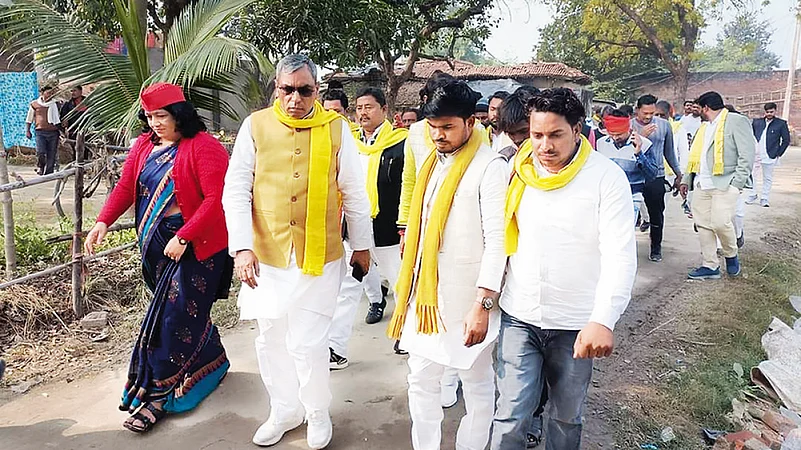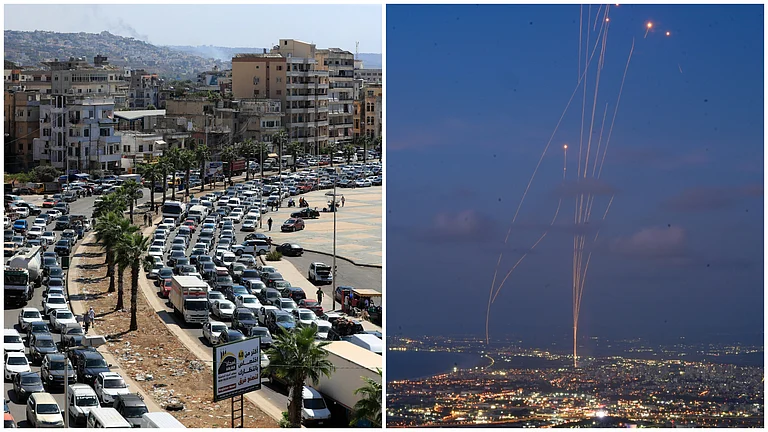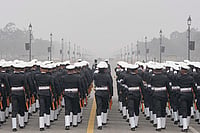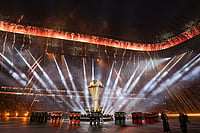In 1991, when the then chief minister Mulayam Singh Yadav was wiped out by the BJP in the assembly elections in Uttar Pradesh, many political analysts had started writing the political obituary of the patriarch. But the seasoned and wily politician that he is, Mulayam Singh bounced back spectacularly. He formed his own outfit, the Samajwadi Party, in 1992 and a year later, contested elections in alliance with BSP to oust the BJP from power. “Mulayam forming his own outfit was not an isolated incident…the writing on the wall was clear. We needed to go beyond the established communities,” says C.P. Rai, the then general secretary of SP. “In the Indian federal structure, the time has arrived when smaller groups will manifest their power.”
The SP leader’s social engineering ensured a rainbow coalition as he wooed leaders of diverse castes and communities, recalls Rai. One such leader was Gulab Sehra—a Congress leader, a two-term Dalit MLA and the leader of opposition. When Mulayam asked Sehra to join SP, Rai was the man who persuaded the Dalit leader to switch sides. And when Mulayam became the CM, he took Sehra on his official plane to Agra. “The awakening after the Mandal Commission was harvested mainly by Yadavs and Kurmis in UP. But federalism had space for other smaller groups and castes. I persuaded Mulayam to appoint Sunder Singh Baghel as Ferozabad unit president of SP. He later went on to become minister. Today, Baghel is a very enlightened community in the Agra region,” Rai adds.
The churning in Indian politics and society and the caste arithmetic of leaders like Mulayam—and Laloo Prasad Yadav in Bihar—had seen the emergence of smaller population groups to assert their claims over the political space. This in turn gave birth to smaller regional parties, sometimes representing minuscule communities often ignored or subsumed by larger political groupings. Though their populations varied from a meagre one to seven per cent, these groups were driven by the simple thumb rule—they may not win, but no one will without their support. Election Commission data show that the number of smaller parties had reached over 300 in 2017 compared to a double-digit number in 1989.
Mohammad Sajjad, a Professor at Aligarh Muslim University, sums up the trend succinctly. “Formation of smaller parties which are community- and sub-region-based is a direct manifestation of the unique federal structure of India. This reflects division of power. When these social groups do not get the desired result from larger parties, they turn towards formation of their own party,” he says. Numbers are important in a federal structure. Each vote counts and in government-formation, the number of MLAs/MPs becomes crucial. “Due to the federal structure, these groups have significance in small regions owing to their proportionate numbers. But often their aspirations are not fulfilled as their leaders turn it into dynasty politics, so they turn towards another party, headed by another leader among them,” he adds. However, Sajjad is also of the opinion that the same federal structure which gives rise to smaller parties, will soon see the next stage of class solidarity depending on the economic status of the region—the demand for smaller states or autonomous areas.

Professor Afroz Alam of Maulana Azad National Urdu University, Hyderabad, has another theory for the emergence and success of regional parties. “As we know, federalism is all about division of power between the Centre and states. This division of power is articulated prominently when the states are ruled by regional parties. In recent years, the creative manipulation of national parties to centralise power and dictate the terms to states has increased. The arbitrary style of working of national ruling parties while sidelining the local/regional interests is creating more fault lines for federalism to succeed,” he says. “As a result, India is witnessing thousands of minor/regional parties getting involved in the electoral process, putting serious competitive pressure on the dominant national parties and on occasion, influencing electoral outcomes with their consolidated social bases.”
ALSO READ: Federalism And The Idea Of Regionalism
He points to the realignment of social groups for the ongoing assembly elections in Uttar Pradesh, reflected in the pre-electoral alliances between mainstream parties and constituency-specific minor parties. “For instance, the BJP has allied with Apna Dal and Nishad Party while the SP allied with SBSP, RLD etc. Similar is the case in other states,” he adds.
Social transformation
The birth of caste-centric small parties also has much social impact. The backward castes and even Dalits had their share of tall leaders in the past. Many of them enjoyed influence in bigger parties. However, often the party projected them just as a “face” of a particular group without devolution of power. It was assumed that highlighting these “faces” was equivalent to giving representation to a particular community.
A more visible and rapid social transformation began after 1989 when the Congress was ousted from power in Uttar Pradesh. The leaders who had influence over their communities started expanding their bases. This is also due to a social awakening among their community and educated youth articulating their grievances more forcefully. The bigger parties realised that the time for dialogue had arrived. One of the best examples is of former bandit Phoolan Devi, who was taken into Samajwadi Party by Mulayam Singh Yadav and later given the party ticket for contesting the Lok Sabha polls. As she became an MP, her backward Mallah community rallied behind her in a big way. Such was her influence that she was invited as a guest to Akhilesh Yadav’s marriage with Dimple, where she blessed the couple. On her death, even Mulayam Singh and late Amar Singh were present during her funeral. After her death, some of her supporters formed the Phoolan Sena to galvanise the community. Till date, she remains an icon for her community.
Another example of a community asserting itself is the emergence of the Nishads as a political force. Once represented by the Nishad Army headed by Arvind alias Raja Nishad, the community now has political representation through the NISHAD party headed by Dr Sanjay Nishad in UP and the Vikassheel Insan Party headed by Mukesh Sahni in Bihar. “Political and social awareness has come to most of the communities. We see it as a good thing. All communities should have their leaders and parties. Ours is a social organisation, we aim at good representation and raising the voice of our community. We are no more ornamental pieces,” Raja Nishad says.
The glass ceiling has broken. These communities which were satisfied by getting representation in bigger political parties do not shy away from talking directly to these parties. They have dialogue, their demands and want their share of the bigger political pie. The NISHAD party is presently an ally of BJP in UP. Social media too has a role in projecting these smaller parties. The youths are now armed with smartphones and openly highlight the achievements of their community, even if it is about someone becoming a high-ranking official, a celebrity or a political leader. The awareness and the medium to spread words has been instrumental in making these communities aware of the importance of their votes.
(This appeared in the print edition as "Small Is Powerful")
ALSO READ
(The writer is a Lucknow-based senior journalist)

























